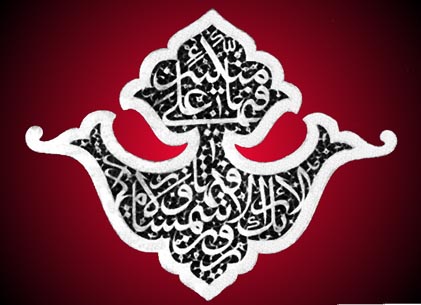|
In
written rather than spoken form, language inevitably partakes of the
ornamental. When we recall that fact, we may first think of Western
fonts and Eastern ideograms, or perhaps of the fantastic medieval rubrics
of the Irish Book of Kells.
Less familiar but no less imaginative is the long tradition
of Arabic calligraphy. Here are two lovely examples.
Above
left. 17th-century steel plaque from the door to an Iranian tomb (the
plaque now resides in the Art Institute of Chicago). The design records
a single verse from the Koran:
“Here they recline upon couches; there they will find neither
blazing sun nor bitter cold.”.
My version enhances an illustration from Anthony Welch, “Islam
Calligraphy: Meaning and Symbol” (p. 174), in Paul A. Kolers, Merald E. Wrolstad, and Herman Bouma (Eds.),
Processing of Visible of Language 2; New York: Plenum Press (1980),
pp. 157-181.
Above
right. Also from the 17th century, this Persian ink drawing both limns
and spells the word “dove.” It functioned as the signature
of a tribal chief. I have taken it from Donald M. Anderson, The Art
of Written Forms: The Theory and Practice of Calligraphy, New York: Holt, Rinehart and Winston (1969),
p.302, who in turn took it from Ernst Lehner, Alphabets & Ornaments, Cleveland, OH: World
Publishing (1952). Lehner’s resourceful book is still available,
very cheaply, in a Dover Publications reprint.
Of
course, in a more mundane way, the ornamental enters into comp teaching
via font selection, paragraph spacing, page number placement, illustration
design, and a hundred other graphic features that personal computers,
versatile software, internet access, and digital cameras and scanners
are making more and more a part of our instruction in writing.
RH,
October 2003 |

